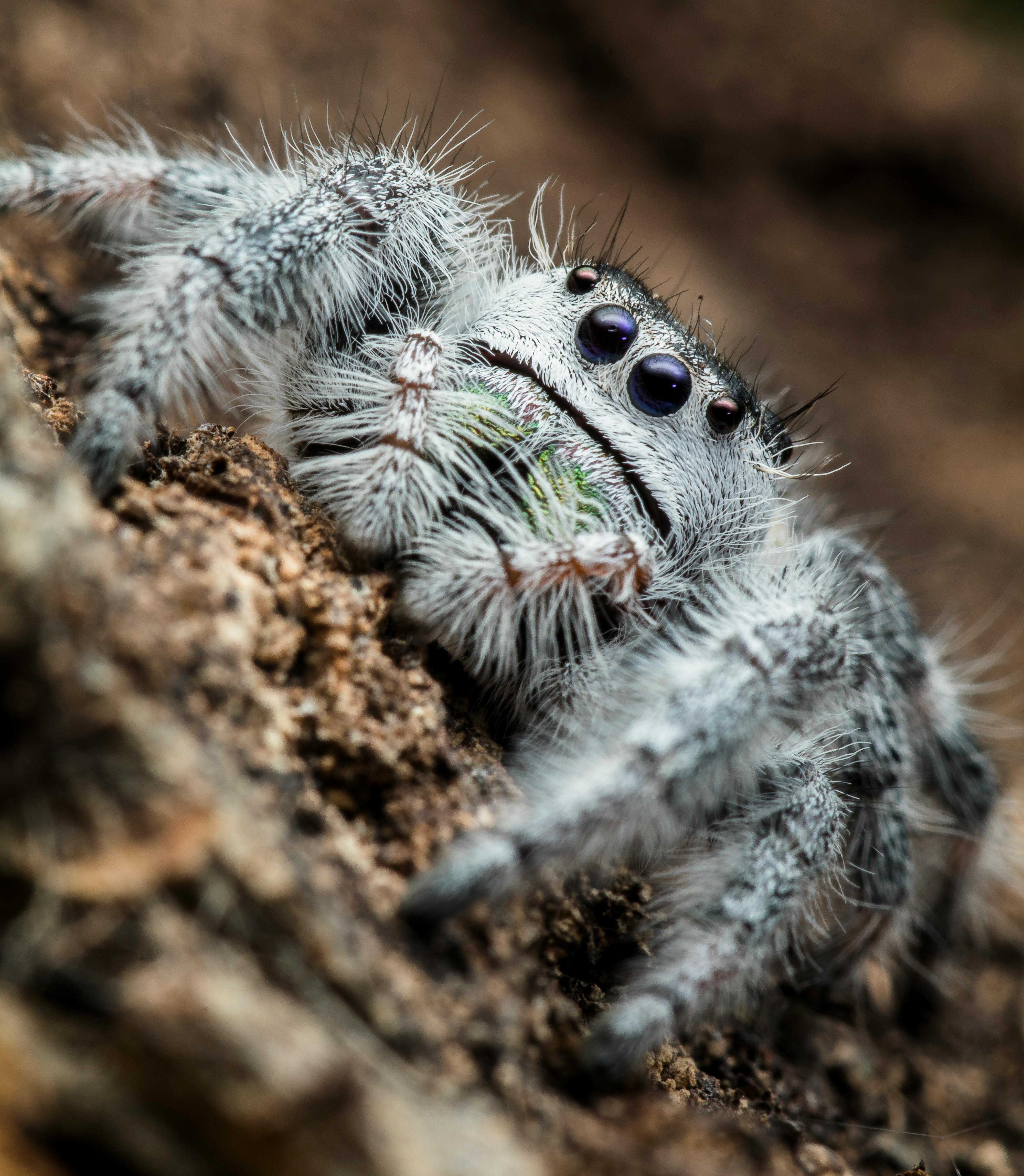Think you know everything there is to know about tarantulas? Well, prepare to be amazed as we delve into the fascinating world of tarantula courtship behavior during mating. Discover the intricate dance of seduction that takes place between these eight-legged creatures and learn about their unique mating rituals. From elaborate displays to elaborate web-spinning techniques, you’ll be captivated by the mesmerizing courtship behavior of tarantulas. So, get ready to uncover the secrets of this extraordinary mating ritual!

Introduction
Tarantulas are fascinating creatures found in various parts of the world. These large, hairy spiders are known for their intimidating appearance and venomous bites, but there is much more to them than meets the eye. In this article, we will delve into the intriguing world of tarantula courtship behavior during mating. Understanding these behaviors can provide valuable insights into their complex social interactions and contribute to the conservation efforts of these remarkable arachnids.
Overview of Tarantula Courtship
The importance of courtship in tarantula mating
Courtship is a critical aspect of tarantula mating, as it allows individuals to assess each other’s fitness, compatibility, and readiness to reproduce. It serves as a means for males to convince females to mate with them, ensuring both successful fertilization and minimizing the risk of cannibalism. Courtship behaviors also play a crucial role in species recognition and facilitate the exchange of chemical and tactile signals between potential mates.
Different courtship behaviors across tarantula species
Tarantulas exhibit a wide range of courtship behaviors, which vary significantly among species. Some species engage in elaborate rituals involving dances and displays, while others employ more subtle cues to attract and communicate with their potential mates. These variations in courtship behavior highlight the diversity and complexity within the tarantula family.
Factors influencing courtship behavior
Several factors influence courtship behavior in tarantulas. Environmental conditions, such as temperature and humidity, can impact the timing and intensity of courtship displays. Additionally, genetic factors and previous mating experiences can shape an individual’s courtship behavior. The availability of resources, such as food and shelter, can also influence courtship rituals, as individuals may need to compete for these limited resources.
Identification and Attraction
Identification of potential mates
Tarantulas rely on various sensory cues to identify potential mates. They possess highly sensitive chemoreceptors, which allow them to detect chemical signals, or pheromones, released by females. Males may also use visual cues, such as differences in body size or coloration, to identify potential mates. This identification process is crucial in ensuring that males approach individuals of the correct species and avoid wasting energy and resources on incompatible mates.
Chemical cues and pheromones
Chemical communication plays a vital role in tarantula courtship. Males secrete pheromones that can be used to attract females from a distance. These pheromones are often released through specialized structures on the male’s abdomen or leg spurs. Female tarantulas can detect these chemical signals and use them to assess the quality and suitability of potential mates. Chemical cues also play a role in synchronizing courtship behaviors between males and females.
Visual cues in courtship behavior
In addition to chemical cues, visual cues also play a significant role in tarantula courtship. Males may exhibit distinctive color patterns or body postures during courtship displays to attract females. These visual signals can indicate the male’s health, vigor, and willingness to mate. Females, in turn, may respond more positively to males displaying attractive visual cues, increasing the chances of successful mating.
Courtship Rituals
Male approaches and initiates courtship
The courtship rituals of tarantulas typically begin when a male identifies a potential mate. He will approach the female cautiously, evaluating her receptiveness through a series of subtle movements. Males often use their legs to tap gently on the female’s substrate, testing her response and assessing her willingness to engage in courtship behaviors.
Dance-like movements and displays
Once the male determines the female’s receptiveness, he will begin a series of elaborate dance-like movements and displays. These displays may involve rapid leg movements, rhythmic body vibrations, or intricate leg lifts. The male’s goal during this stage is to capture the female’s attention and convince her of his suitability as a mate.
Mating dances and rituals
As the courtship progresses, males may engage in specific mating dances and rituals unique to their species. These dances can be elaborate and involve synchronized movements between the male and female. They serve as a form of communication, allowing the male to convey his fitness, dominance, and genetic quality to the female. Successful completion of these dances increases the likelihood of successful copulation.

Communication during Courtship
Vibrations and seismic signals
Tarantulas communicate through vibrations and seismic signals during courtship. Males produce these signals by drumming their legs on the female’s substrate or creating vibrations through their body movements. These vibrations can convey information about the male’s size, strength, and enthusiasm for mating. Females may respond to these signals by altering their behavior or adopting specific postures to signal acceptance or rejection.
Auditory signals and stridulation
In some tarantula species, males produce auditory signals through stridulation. Stridulation involves rubbing specialized structures on their legs together, creating distinctive sounds. These sounds can serve as additional courtship signals, allowing males to communicate their presence and attract females from a distance. Females can then assess the quality of potential mates based on the strength and frequency of these sounds.
Tactile signals and leg tapping
Tactile communication is also important during tarantula courtship. Males often use their legs to tap or stroke the female’s body, transmitting tactile signals that convey information about their intentions and suitability. These leg taps can be gentle and rhythmic, signaling courtship interest and encouraging the female to respond. Alternatively, they can be forceful and aggressive, serving as a challenge to competing males or indicating the male’s dominance.
Display of Mating Aptitude
Gift-giving behavior
Some male tarantulas display their mating aptitude through gift-giving behavior. They may offer a silk-wrapped package containing food to the female during courtship. This behavior serves multiple purposes. Firstly, it provides the female with nourishment, increasing her receptiveness to mating. Secondly, it demonstrates the male’s ability to secure resources, indicating his suitability as a mate. However, not all tarantula species exhibit gift-giving behavior during courtship.
Delicate maneuvering and positioning
During courtship, males often engage in delicate maneuvering and positioning to ensure successful copulation. They may use their legs to guide the female into a favorable position, securing her fangs and preventing potential harm. This maneuvering requires careful coordination and agility to avoid triggering a defensive response from the female. Successful positioning is crucial for sperm transfer and can significantly increase the likelihood of reproductive success.
Fighting off competitors during courtship
Competition amongst males for access to females is common in the world of tarantulas. During courtship, males may encounter rival suitors vying for the same female. In such instances, males may engage in aggressive behaviors, including physical combat and territorial displays. These interactions serve to establish dominance and eliminate competitors, increasing the male’s chances of successfully mating with the receptive female.

Female Response and Choice
Female aggression and decision-making
Female tarantulas are not passive during courtship. They actively evaluate potential mates and make decisions based on several factors. Females may display aggression towards males that they perceive as unsuitable or incompatible. They can reject advances through aggressive posturing, lunging, or biting. Female aggression during courtship serves as a crucial mechanism for mate choice and ensures mating occurs only with males possessing desirable traits.
Criteria for mate selection
Tarantula females have certain criteria for mate selection. Some factors that influence their choice include the male’s size, health, and ability to provide resources. Females often prefer larger males, as they are more likely to possess sufficient resources and genes for successful offspring. The male’s courtship behavior, including the intensity and coordination of his displays, can also influence a female’s decision. These criteria help females maximize their reproductive success and ensure the survival of their offspring.
Role of female in courtship behavior
While males take the lead in courtship, females play an active role throughout the process. Their responses and behaviors during courtship can significantly influence the male’s behavior and determine the success of mating. Females can choose to engage or disengage in courtship, signaling their consent or rejection through various means. Through their active decision-making, females contribute to the maintenance of genetic diversity and selective pressures within tarantula populations.
Mating and Copulation
Successful mating strategies
Successful mating in tarantulas requires precise timing and coordination between the male and female. Once courtship has been successfully completed, the male approaches the female cautiously and initiates copulation. Both individuals must remain in contact while copulation takes place, ensuring the transfer of sperm and the fertilization of eggs. The success of mating strategies ultimately determines the reproductive success of both individuals.
Sperm transfer and palp insertion
During copulation, males transfer sperm to the female using specialized appendages called palps. The male inserts one or both palps into the female’s reproductive organs, allowing for the transfer of sperm packets. This process can be complex and requires synchrony between the male and female to ensure successful fertilization. Palp insertion is a delicate process, as any mishaps or premature withdrawal can lead to failed copulation or harm to either individual.
Post-copulatory behaviors and cannibalism
After mating, post-copulatory behaviors may follow. In some cases, the male may immediately disengage and retreat, leaving the female to care for the fertilized eggs. However, in certain species, the risk of post-copulatory cannibalism exists. The female may view the male as a potential food source, especially if she is unable to obtain sufficient resources or if she perceives the male as a threat. This behavior varies among tarantula species and can influence the male’s post-mating strategies and survival rates.
Reproductive Success and Parental Care
Egg-laying and egg sac construction
After successful copulation, female tarantulas lay eggs, ensuring the continuation of their lineage. The female constructs an egg sac, a web-like structure used to protect and incubate the developing eggs. The construction of the egg sac involves meticulous silk spinning and weaving, creating a secure environment for the embryos. The female’s ability to construct a robust egg sac is essential for the survival and development of the future spiderlings.
Female care for eggs and spiderlings
Female tarantulas exhibit varying degrees of parental care for their eggs and spiderlings. Some species diligently guard and protect the egg sac, remaining with it until the spiderlings emerge. The female may act as a source of protection, shelter, and food for the young spiderlings during their early stages of development. This parental care enhances the survival rates of offspring and contributes to the overall reproductive success of the species.
Guarding behavior and survival rates
During the period of parental care, female tarantulas exhibit vigilant guarding behavior, ensuring the safety of their offspring. This guarding behavior involves maintaining proximity to the egg sac, defending it against potential predators, and regulating environmental conditions such as temperature and humidity. By providing this protection, females enhance the survival rates of their spiderlings, increasing the chances of successful reproduction for the species.
Conclusion
Understanding the intricacies of tarantula courtship behavior is essential for researchers, enthusiasts, and conservationists alike. By unraveling the mysteries behind these complex behaviors, we can gain insights into the evolutionary adaptations, social interactions, and reproductive strategies of these fascinating creatures. Such knowledge can guide future research, ensuring the preservation and conservation of tarantulas and their ecosystems. As we continue to explore the courtship behavior of tarantulas, let us not forget the significance of these arachnids in maintaining the delicate balance of our natural world.
